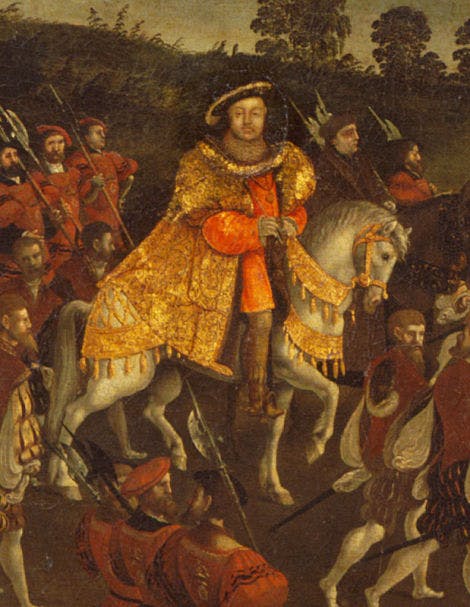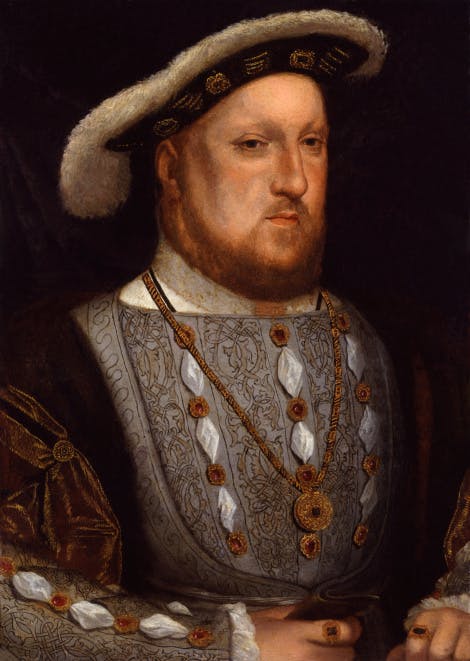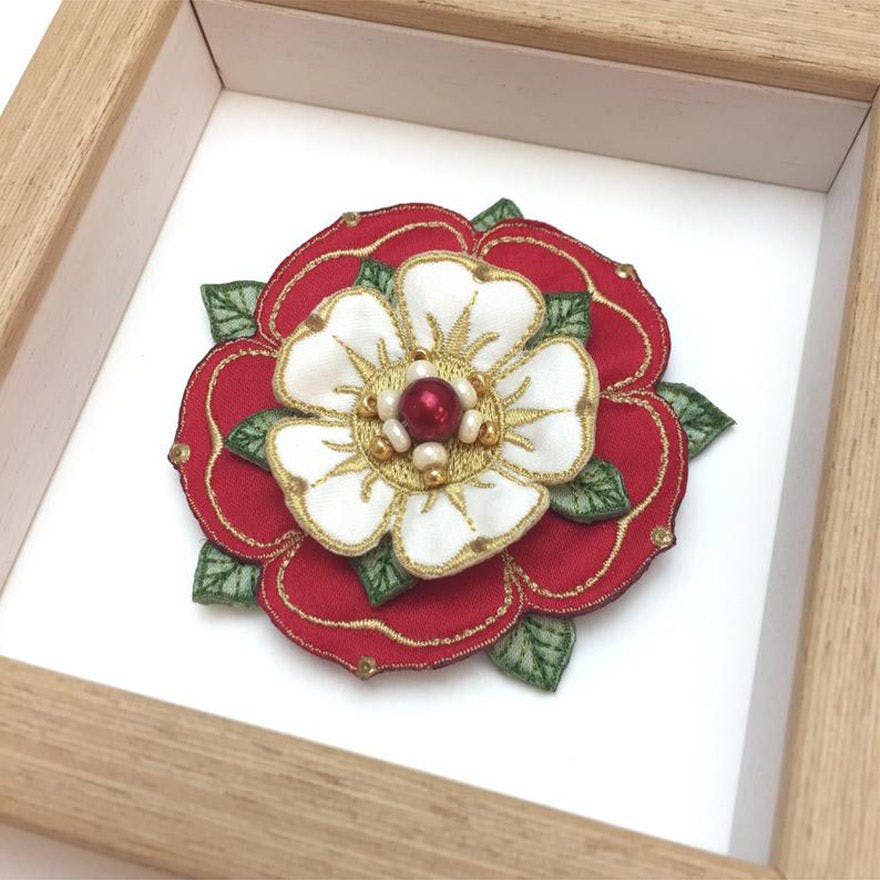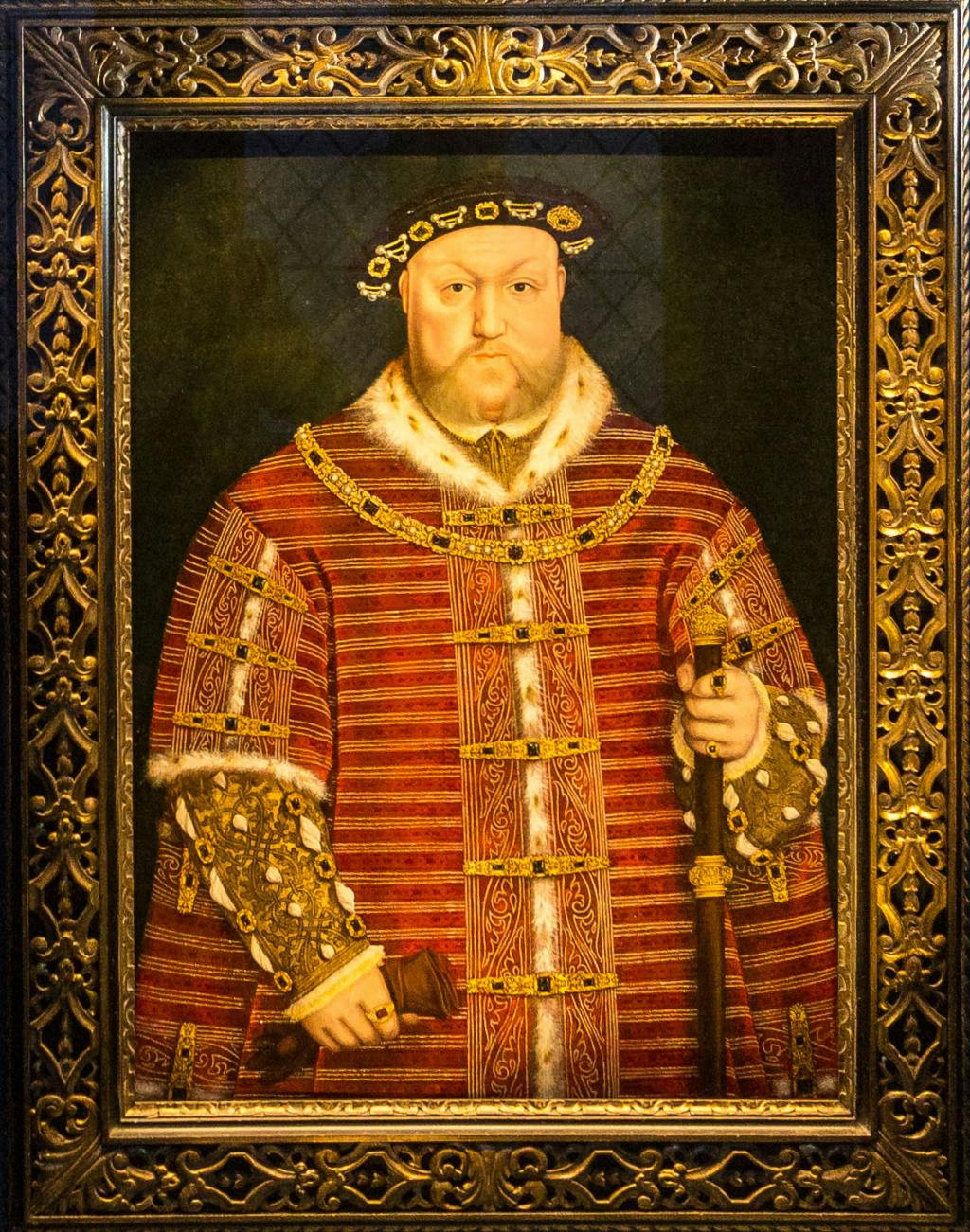
Discover a hidden Tudor room
The Wolsey Closet is one of the best surviving fragments of Henry VIII's privy (private) apartments at Hampton Court Palace. The Wolsey Closet contains an original Tudor fireplace and ceiling, 16th-century wooden panelling, a series of painted panels, and a portrait of Henry VIII.
The origins of the Wolsey Closet
The Wolsey Closet is named after Henry VIII's Lord Chancellor, Cardinal Thomas Wolsey, who transformed Hampton Court from a country house into a palace. Historically, a closet was a small private space meant for quiet reflection in large palaces, as well as a place to store treasures and books.
While the origins of the Wolsey Closet are still a mystery, it was likely part of a series of rooms built by Wolsey for Henry VIII. The King may have used the space to hold private conversations with Wolsey about important matters of the day — from the lavish spectacle of the Field of Cloth of Gold to the King's divorce to Katherine of Aragon.
When
Open
In line with palace opening hoursTicket Information
Included in palace admission (members go free)
Buy Hampton Court Palace tickets
The Tudor Ceiling
The exact date and origin of the Tudor ceiling in the Wolsey Closet are still unknown and it may have been moved from elsewhere in the palace.
The ceiling was once thought to have been created from leather maché but our Conservation team have discovered, through material analysis, that the substance is made from fine sawdust, mixed with brick dust, which is held together with a glue — likely made from animal skins.
Our Conservation team identified later additions to the ceiling, such as the Prince of Wales feathers made from plaster of Paris, which were almost certainly added later.
What are the symbols on the ceiling?
The ceiling includes many colourful motifs closely connected to the Tudors. The most recognisable is the Tudor rose, an important royal symbol used from the reign of Henry VII onwards. The petals represent the two noble houses that fought for the throne in the civil wars known as the 'Wars of the Roses': the red petals represent the House of Lancaster, while the white petals symbolise the House of York. The emblem was first used by Henry VII after he united both houses through his marriage to Elizabeth of York.
Another motif is the Prince of Wales's feathers, characterised by three white ostrich feathers emerging from a gold coronet. This motif was favoured by Henry VII's son eldest son, Prince Arthur, and Henry VIII's son Edward VI.
In addition to heraldic symbols, the ceiling also contains a frieze with Wolsey's motto in Latin - 'Dominus michi adiutor' - which translates to 'the Lord be my helper'.
Image: Detail of the ceiling richly decorated with gilded Renaissance motifs and coloured badges incorporating the Tudor rose and the Prince of Wales's feathers. © Historic Royal Palaces
Learn about the conservation of the ceilingThe Passion Cycle Paintings
Displayed in the Wolsey Closet are the 'Passion Cycle' paintings, which depict the story of Christ's last days: The Last Supper (pictured below), The Flagellation, The Bearing of the Cross and The Resurrection.
These are surviving fragments from at least two separate early 16th-century sets of paintings.
The Passion Cycle series (except for The Last Supper) were painted over earlier artworks, dated from either the late 15th or early 16th century, which were discovered in the 20th century. These earlier painted scenes were identified and partially revealed during conservation work in the 20th century.
Close Up: The Last Supper, The Flagellation and A Praying Man
View these paintings in high definition in this Gigapixel image, created in partnership with Google Arts & Culture.
Henry VIII portrait
Listen to the podcast
Want to learn more about the Wolsey Closet? In this episode of the six-part mini-series, 'A Space I Love', join Historic Royal Palaces curator Charles Farris as he takes us on a gentle stroll into this small but special Tudor space at Hampton Court Palace.
More EpisodesEXPLORE WHAT'S ON

- Things to see
Cumberland Art Gallery
Discover masterpieces by Rembrandt, Caravaggio, van Dyck, and more at the Cumberland Art Gallery at Hampton Court Palace.
- Open
- Hampton Court Palace
- Included in palace admission (members go free)

- Things to see
Mantegna Gallery
The Mantegna Gallery is closed for maintenance work until 2026. Two paintings from The Triumphs of Caesar can be seen in the Queen’s Presence Chamber (part of The Georgian Story) during this period.
- Closed for maintenance
- Hampton Court Palace
- Included in palace admission (members go free)

- Things to see
Great Watching Chamber
Discover Henry VIII’s State Apartments and the battle for power at the Tudor court in the Great Watching Chamber.
- Open
- Hampton Court Palace
- Included in palace admission (members go free)
BROWSE MORE HISTORY AND STORIES

The Field of Cloth of Gold
Henry VIII's historic meeting with his great rival François I in 1520 was a defining point in his reign

Henry VIII, Terrible Tudor?
Who was the real Henry VIII?

Life at the Tudor court
In the Tudor period, a monarch’s home was centre of the nation
Shop online

Shop Tudor gifts
Browse through our Tudor Collection to find a whole range of products based on the Tudors.
From £3.00

Shop Hampton Court Palace Gifts
Our gifts and souvenirs are are inspired by over 500 years of history from Hampton Court Palace.
From £2.50

Shop Henry VIII gifts
Explore the range of products inspired by this larger than life monarch and Hampton Court Palace where all his six wives lived.
From £2.50

